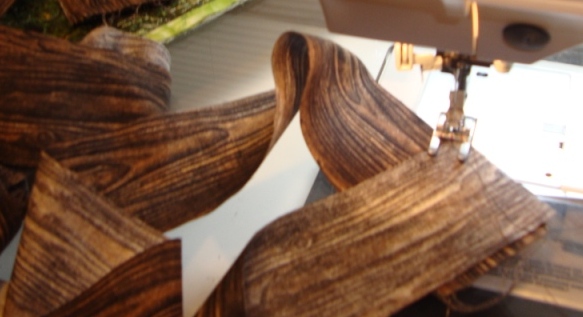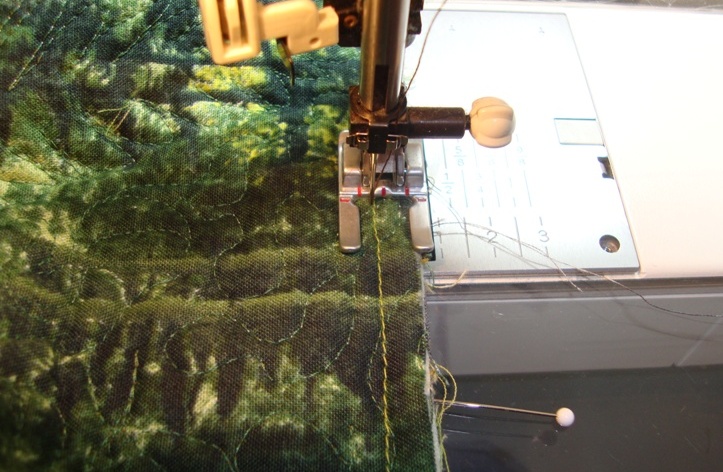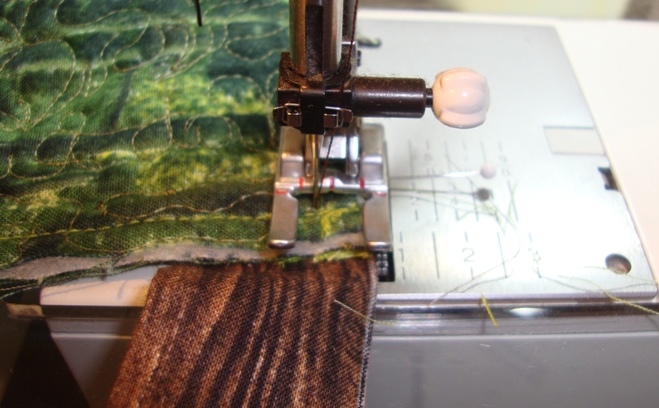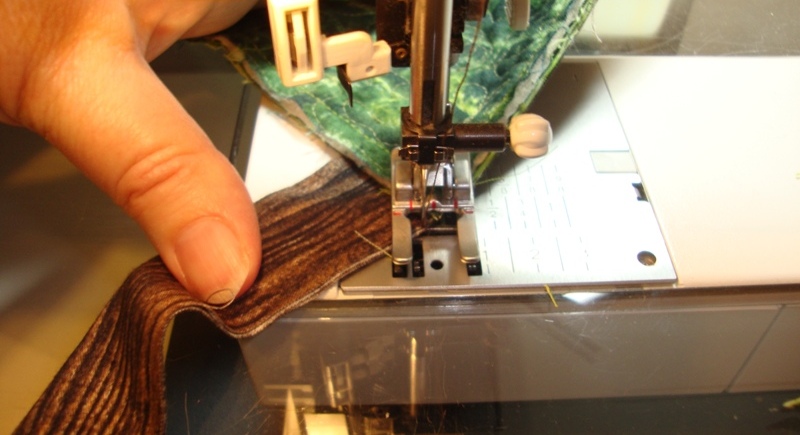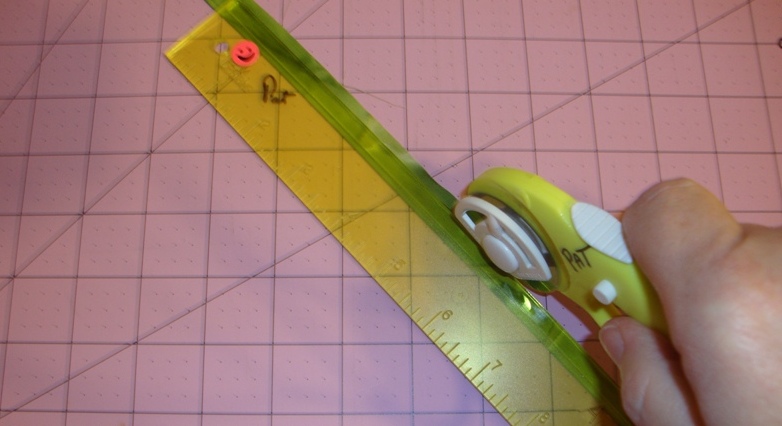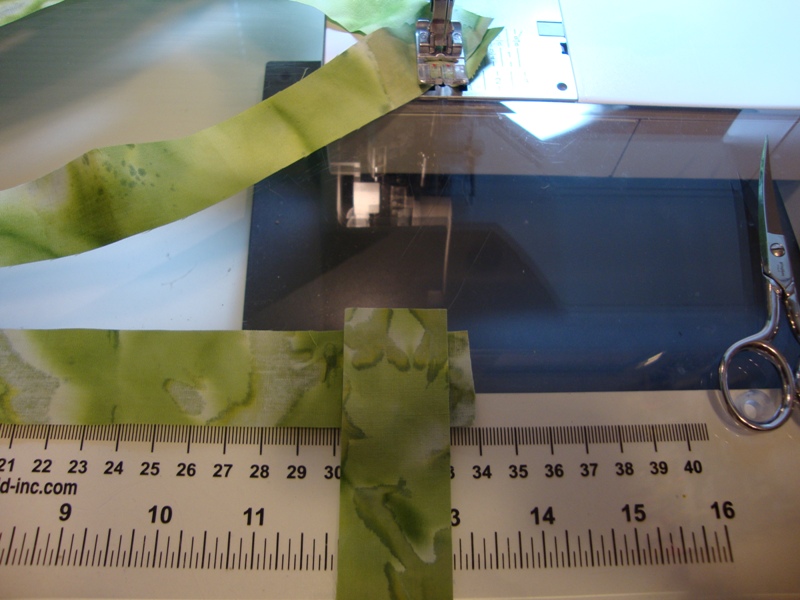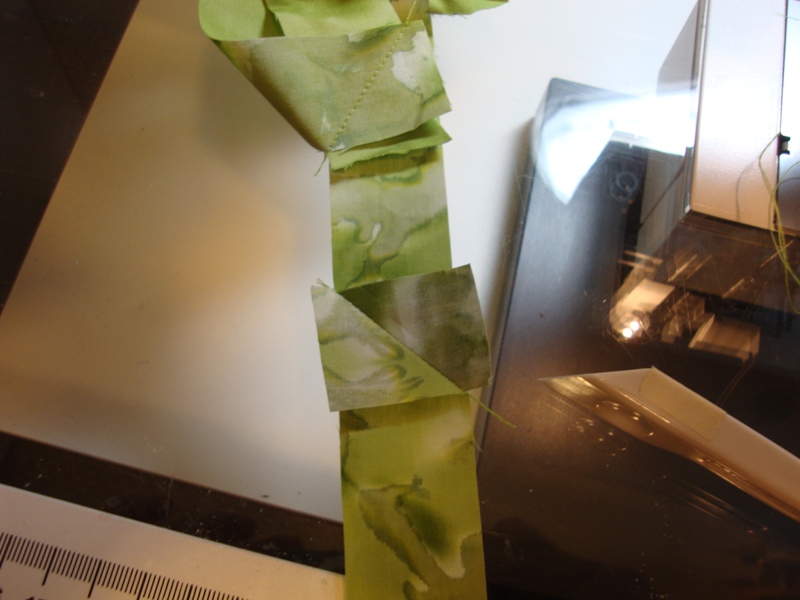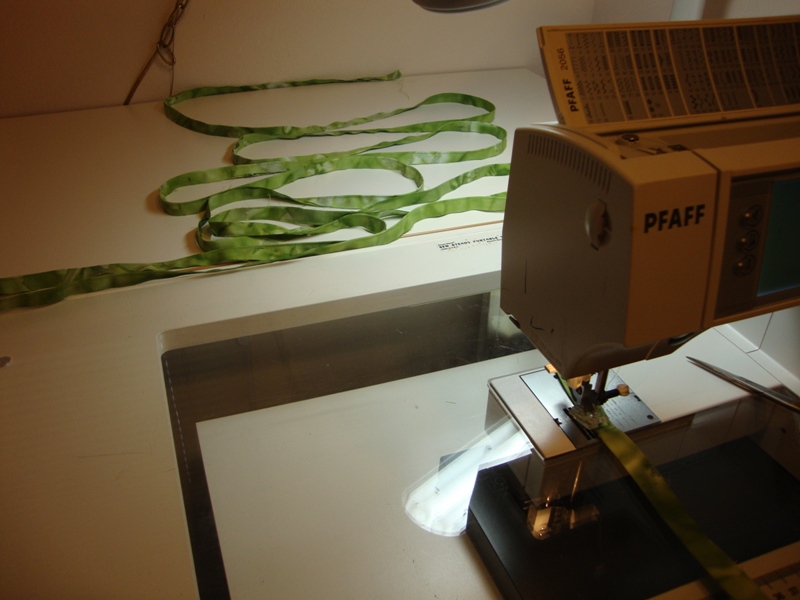Finishing 4–binding
Here we are again binding the big quilt.
The bottom edge shows the folded back binding ready to be sewn. The top is the already sewn other side. I pinned them together to make sure they match (avoiding the stretch monster). Now I know they are the same size and I can go on with confidence.
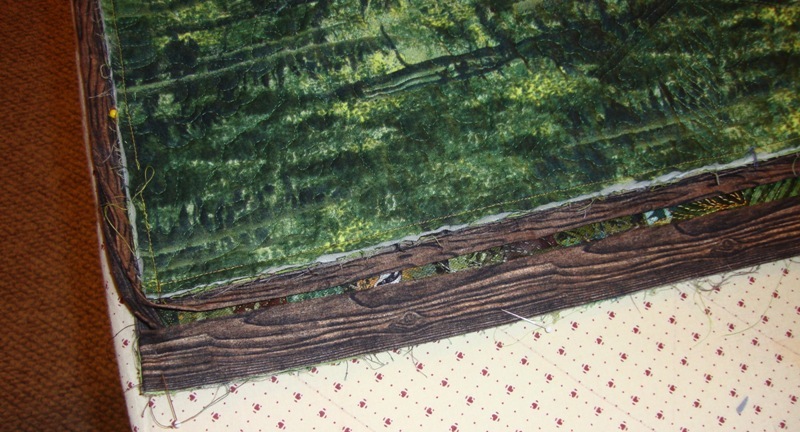
After you have completed 3 sides and have turned the corner on the 4th, you need to leave a gap of at least 10″ or so with tails of binding on each side.
We had folded the beginning edge at a 45 degree already so it’s ready to meet the other end. I put a little basting glue along that diagonal edge and then fit the end binding into it. Smooth it out, make sure everything fits right and then add pins to hold it for sure.
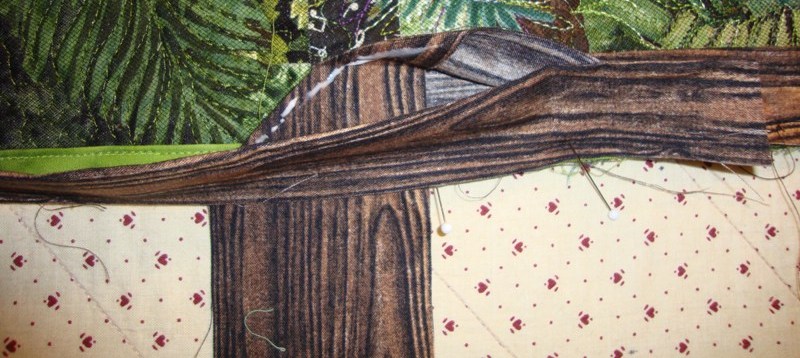
You can then pull the binding away from the quilt and manipulate it to fit into your machine so you can stitch along the folded diagonal. Press the seam open, trim to 1/4″ and then align it along the edge of the quilt again, pin well and stitch the binding to the quilt to complete the whole binding.
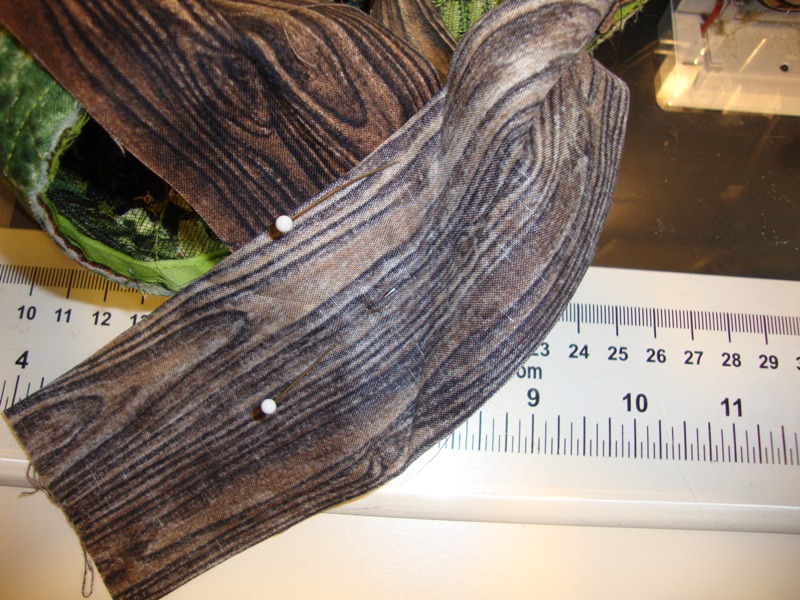
Then you can see it just looks like any other seam along the length of the binding.
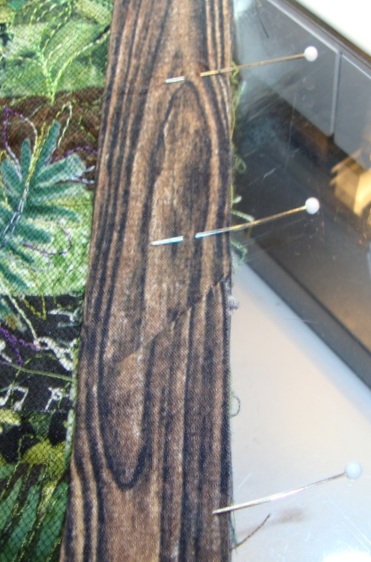
The last step is to turn the folded edge to the back of the quilt and hand stitch with your nicest hand stitching so it covers the machine stitching line and looks great from the back.
It’s done, congratulations!

